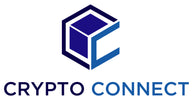What is an NFT?
NFTs are non-fungible tokens. They act as a non-duplicable digital certificate of ownership for any assigned digital asset. Basically, it is a smart contract that is put together using bits of open source code, which anyone can find from platforms like GitHub, and used to secure that digital item. Once the code is written, it is then minted, or permanently published, into a token (most commonly a token called an ERC 721) on a blockchain, like Ethereum.
Some popular forms of NFTs include jpegs, gifs, videos and, of course, tweets. But really any digital asset that the creator wants to make unique can become an NFT, like articles or event tickets.
Once the NFT is purchased, the owner has the digital rights to resell, distribute or license the digital asset as they please. The only caveat is that the creator can program in limitations in the NFT’s code for how it gets used, such as the asset cannot show up on a specific platform, like a TV network, according to Shidan Gouran, co-founder of Gulf Pearl, a merchant bank in the blockchain sector. NFT creators also have the opportunity to earn royalties off of future reselling transactions.
In the case of the first tweet, it will still exist for on Twitter for other users to see, but only the sole owner gets the “bragging rights” of owning the digital asset.
How is it different from a fungible token?
Fungible tokens consist of cryptocurrencies like Bitcoin (BTC) and Ethereum (ETH), and traditional currencies like USD or EUR. NFTs are unique assets that do not have a one-to-one value with other NFTs. Meaning that while $1 equals $1, one NFT does not equal another NFT.
The value that an NFT has is based on how well received the item is by the people who are willing to buy it, usually using cryptocurrencies like ETH. If an item, like the first tweet, is very desirable, its value goes up. And the fewer there are of the item, the more exclusive it becomes, also likely driving up the value.
Why would someone buy an NFT?
NFTs can be a financial investment, a sentimental purchase, a collectible item or a way for the buyer to feel more connected to the NFT’s creator, like an artist or a brand. It is similar to how people collect baseball cards, sneakers or even Beanie Babies.
Sometimes that desire is tied to brand affinity. Loyal fans of Nike might try to buy one of only a few thousand pairs Jordans when they drop. So similarly, if Nike decided to drop a collection of 25 NFTs of a Nike swoosh gif, those same diehard fans will try and buy one of those as well when they drop.
“People have a desire to have a collection of things in an online portfolio, which demonstrates themselves as an individual similar to the way that the way they would wear clothes,” said Chris Allick, svp and creative technology director at Deutsch LA. “The desire to own scarce objects is real.”
There is also a community aspect to NFTs. For example, some artists that create NFTs of their digital artwork will give buyers exclusive access to a private channel on the chat platform Discourse that only purchasers of that artist’s NFTs have access to, thus forming an exclusive club.
Who verifies that the NFT is legit?
An NFT code has a signature from its creator that authenticates the token on any server, browser or platform, making it verifiable in a decentralized way. Therefore, no one entity is responsible for hosting an NFT.
For example, if an NFT is created of a concert ticket, that ticket does not have to be verified through a ticket selling platform like Ticketmaster. It can be verified through any blockchain.
There are three dominant blockchains where NFTs are built: Ethereum, Dapper Lab’s Flow and Polkadot.
And there are three main marketplaces for buying and selling NFTs, all of which are run on Ethereum: OpenSea, Rarible and Nifty Gateway.
The marketplaces act essentially as an eBay for crypto where people can either place bids for NFTs or outright buy an NFT, depending on how the creator set up the selling process. NFTs with limited quantities are typically auctioned off and then resold where as NFTs with set prices and no cap on how many can be minted are available for direct purchase.

